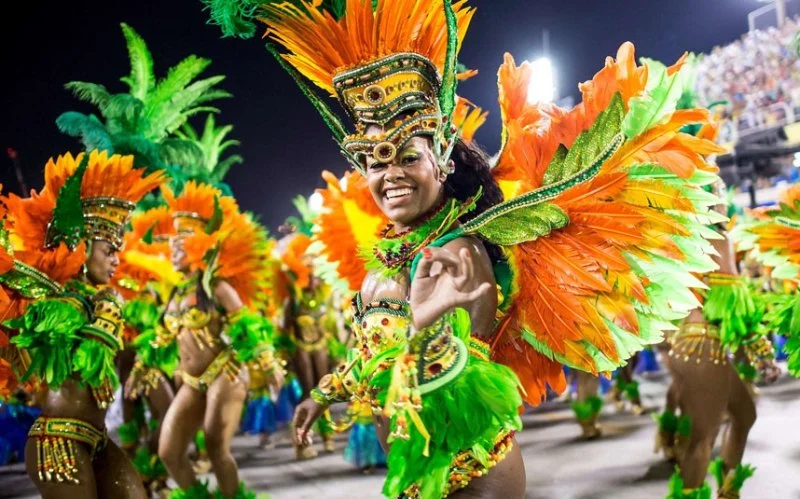
- 1. What is Samba No Pé?
- 2. History of Samba No Pé
- 3. Why Is Samba No Pé Important?
- 4. Key Dance Moves in Samba No Pé
- 5. How to Learn Samba No Pé
1. What is Samba No Pé?
Samba No Pé is a traditional Brazilian solo dance that is a key component of the vibrant celebrations during the Brazilian Carnival. Unlike the paired dancing seen in other types of samba, Samba No Pé focuses on individual movement, with dancers performing complex footwork, quick spins, and energetic body movements. This dynamic style is known for its rhythm, grace, and expressive style, often accompanied by live percussion or samba music.
1.1 The Dance Form
At its core, Samba No Pé emphasizes quick footwork and fluid hip movements. The dancer uses the entire body to convey emotion and energy, with feet constantly moving to the beat of the music. The arms move naturally in sync with the body, while the head and shoulders maintain a relaxed posture. The unique rhythm of the music and the dancer’s expressive body movements are what make Samba No Pé so captivating to watch, especially during Carnival performances.

Adagio Dance Academy / adagio dance
LancasterLancaster CountyPennsylvania
1383 Arcadia Rd, Lancaster, PA 17601, USA
2. History of Samba No Pé
The origins of Samba No Pé date back to the early 20th century in Brazil, where samba music and dance emerged as a combination of African rhythms, indigenous dances, and European influences. It became an integral part of Brazilian culture, particularly in Rio de Janeiro, where the first Carnival parades featured samba performances. Samba No Pé as a solo dance evolved alongside the broader samba culture and became a signature style performed during the lively Carnival festivals.
2.1 Samba No Pé and Carnival
Brazilian Carnival is one of the largest and most colorful festivals in the world, and Samba No Pé plays a crucial role in the celebrations. The rhythm and energy of this solo dance are symbolic of Brazil’s joyful spirit and festive culture. As dancers take to the streets or the parade floats, they perform Samba No Pé to honor their heritage, showcase their skill, and connect with the deep cultural roots of Brazil. It is during Carnival that Samba No Pé reaches its peak, captivating audiences and spreading the infectious energy of the dance.
3. Why Is Samba No Pé Important?
Samba No Pé is more than just a dance; it is a symbol of Brazilian culture, history, and identity. It brings people together, transcending borders and connecting them through a shared love for music and movement. Here are a few reasons why Samba No Pé is so vital:
3.1 Cultural Significance
As a dance form, Samba No Pé embodies the joy, resilience, and vibrancy of the Brazilian people. It is an expression of Brazil’s African heritage, combining African rhythms with local traditions. During Carnival, Samba No Pé becomes a visual and musical expression of cultural pride, with dancers wearing elaborate costumes that highlight the festive spirit of the occasion.
3.2 Promotes Community Spirit
Samba No Pé plays a vital role in community bonding. Whether performed in local samba schools or during national festivals, it brings people of all ages together. It encourages participation in the Carnival celebrations, not only as spectators but also as performers, promoting a sense of belonging and cultural unity.
4. Key Dance Moves in Samba No Pé
The magic of Samba No Pé lies in its energetic and rhythmic footwork. The dance is characterized by fluid movements that appear effortless despite their complexity. Here are some of the key moves that define the dance:
4.1 Ballet-like Footwork
Samba No Pé features quick, intricate footwork that is similar to ballet in its precision and finesse. Dancers typically perform small, rapid steps that glide across the floor, with the feet lightly tapping to the rhythm. The foot movements are coordinated with the upper body’s flow to create a seamless and graceful appearance.
4.2 Hip Movements
One of the most distinguishing features of Samba No Pé is the dynamic movement of the hips. Dancers incorporate fluid hip shakes, sways, and isolated motions that mirror the rhythm of the samba music. These movements are essential for expressing the full emotional depth of the dance.
4.3 Turns and Spins
Spins and turns are a key element of Samba No Pé, requiring balance and precision. Dancers often perform rapid turns, sometimes incorporating complex spins, which add energy and flair to the performance. The ability to perform these spins smoothly while maintaining rhythm is a hallmark of skilled Samba No Pé dancers.
5. How to Learn Samba No Pé
If you're interested in learning Samba No Pé, there are several steps you can take to start mastering this exciting Brazilian dance:
5.1 Find a Dance School
Learning Samba No Pé starts with finding the right place to learn. Dance schools, especially those specializing in Latin and Brazilian dance forms, often offer classes for beginners and advanced dancers. Look for schools like Creative Edge Dance Studio that focus on rhythm, footwork, and body movement to help you master the dance style.
5.2 Practice with Rhythm
Rhythm is the core of Samba No Pé. Practice dancing along to samba music to develop your timing, coordination, and flow. You can start by listening to different types of samba music and moving your body to the beat to get a feel for the rhythm before attempting more complex moves.
5.3 Dance with Confidence
As with any form of dance, confidence is key. Samba No Pé requires you to express yourself through the movement of your body, so don’t be afraid to let go and embrace the music. Over time, as you gain experience, your confidence will grow, and your performances will become more fluid and captivating.
6. Conclusion
Samba No Pé is an incredible expression of Brazilian culture, full of passion, rhythm, and vibrancy. Whether you’re attending a Carnival celebration or simply enjoying samba music at home, this solo dance brings people together and celebrates Brazil’s rich history. Learning Samba No Pé is a fun and rewarding challenge that can enhance your understanding of Brazilian music, dance, and culture. Visit Creative Edge Dance Studio to start your Samba journey today!
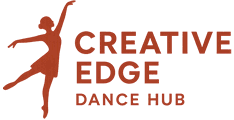




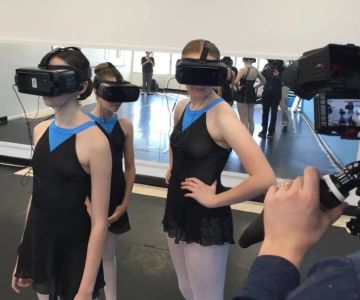
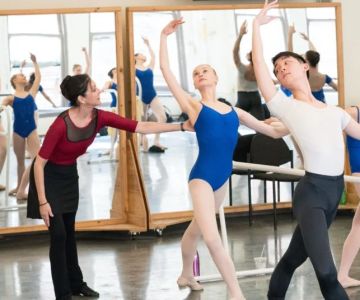

 Ballet Folklorico de Chicago5.0 (161 reviews)
Ballet Folklorico de Chicago5.0 (161 reviews) Electric Cowboy3.0 (199 reviews)
Electric Cowboy3.0 (199 reviews)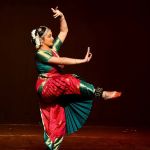 Natyanjali Kuchipudi Dance School - Arts and Culture Studio4.0 (30 reviews)
Natyanjali Kuchipudi Dance School - Arts and Culture Studio4.0 (30 reviews) The Little Gym of Spring4.0 (108 reviews)
The Little Gym of Spring4.0 (108 reviews) Stars Studio4.0 (33 reviews)
Stars Studio4.0 (33 reviews) The Kiz Collective0.0 (0 reviews)
The Kiz Collective0.0 (0 reviews) My Experience of Teaching Dance in Schools — What I Learned About Kids
My Experience of Teaching Dance in Schools — What I Learned About Kids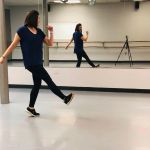 How to Build Your Dance-Related Side Business: My Journey and Tips
How to Build Your Dance-Related Side Business: My Journey and Tips How to Use YouTube to Practice Dance Effectively
How to Use YouTube to Practice Dance Effectively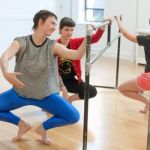 How to Find a Dance Class That is LGBTQ+ Friendly
How to Find a Dance Class That is LGBTQ+ Friendly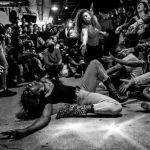 What is Vogue? The Five Elements of Voguing and Their Impact on Dance Culture
What is Vogue? The Five Elements of Voguing and Their Impact on Dance Culture The Connection Between Yoga and Dance for Flexibility
The Connection Between Yoga and Dance for Flexibility